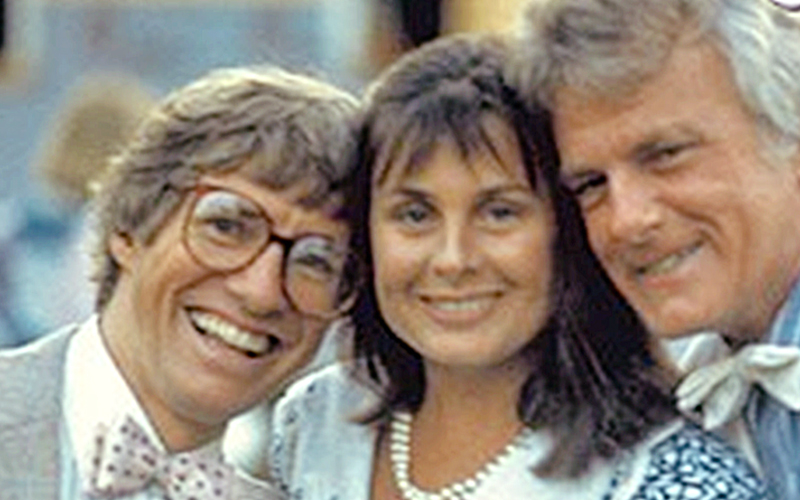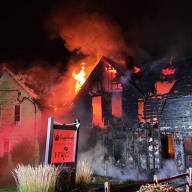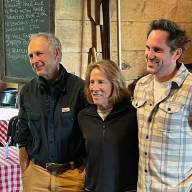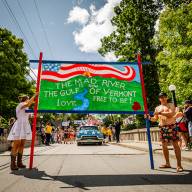1965 changed everything
1965 was a pivotal time in our Valley when out-of-staters (some surely called them Flatlanders) flooded in. They were young people wanting to see what it was like to live in the country. There were ski aficionados and the early ski bums who thought they would have a lark and only stay a year. There was also an interesting group of young men from Yale University, two of whom bought a mountain to build experimental houses on.
Author Martin Holladay put it this way: Almost all branches of American art and culture, including music and architecture, experienced a remarkable explosion of creativity from 1965 to 1975. While I can’t explain the causes of these cultural revolutions — I’ll leave that task to sociologists and historians — I’ll briefly mention what happened during those years: LSD, hippies, free love, second-wave feminism, draft resistance, the Stonewall riots, and the back-to-the land movement. And that’s just for starters.
Historians of architecture have looked back on those years as the origin of the design-build movement, and they are remarkably specific about the movement’s point of origin. The physical location is Prickly Mountain in Warren, Vermont; the years are 1965 to 1970.
The original members of that community included Steve Badanes, John Connell, Louis Mackall, Bill Maclay, Jim Sanford, Dave Sellers, Barry Simpson, and Dick Travers. They had a lot of help from the old timers of the Mad River Valley. The founder of Mehuron’s Market, Elmer Mehuron, gave them 90 days of credit for food. Just long enough to frame up two houses so they could go to the bank for a loan. Bob Gallagher of Gallagher’s Lumber did the same. And the real unsung hero of the endeavor was excavator and all-around tradesman Lenord Robinson of Warren. He fronted his labor and machinery to get the foundations built. And we should acknowledge that Thelma Ricketts would give them a home-cooked meal for $1.50 per person and sometimes Mrs. Robinson, Gene, would too.
As town clerk Emma Ford helped these young men establish themselves with deeds and other formalities -- she recognized they might add something to the parade. It was she who initiated an invitation to them to join in. This decision would expand the flavor and tone of the event for many years to come.
For their first effort, the architects came up with a moveable basketball game, but little did they know that they would be asked to follow the many horses in the parade.
They rigged up the baskets to a Jeep and an old farm cart. It was far from a precisely designed set-up and when they moved along, the baskets would shift up and down. It made an already challenging sport very difficult. Add to that they had to dribble around big puddles of pee and buckets of horse poo. It’s reported that the crowd loved that they were challenged in such a fashion.
And so began a quirkiness that was layered onto the traditional and old-fashioned event. It was an eccentricity that has been cultivated over decades and does not go unnoticed.
In a Charlie Brown documentary, Fayston residents Sparky and Peggy Potter described the creative process of members of their yearly floats:
Sparky: Bring a lot of duct tape, a bunch of screw guns, and it happens right there. It’s a miracle every year.
Butschie (Dr. David Butsch, aka Dickie) calls a meeting. Somebody learns the parade marshals have called out whatever the theme [for the parade] is going to be that year. So, everybody goes to the Butsches’ house to drink beer and distort the theme as much as possible.
Trying to stay somewhere – somewhere beside the bull wheel – but not very close. So, the idea is to mess with it as hard as possible. So, if they say it’s going it’s going to be about green, the first thing we think is how do we turn this upside-down and backwards?
I think maybe 10 people can come up with the nugget of ideas, and Peg is definitely one of them.
And I just sit there and think, “No, this is weird, this is weird.” So, I try to put some grounding to it. As to what’s really going to work. That’s my role. How do you dissect it and make it totally distorted and still make it kind of work.
The truth is nothing really comes together till the morning of the parade though. It’s like from 7:00 in the morning till 9:00, before the parade, it all starts to make sense. It usually happens in the yard. You know, where everybody brings their collection of stuff that might work. You kind of trade-off outfits and ideas.
The one I like the best, was when we showed up and everyone had their own outfit. And Butschie says, ‘You know, I got this idea. I brought a ton of Depends with us.’ These are diapers for big people -- for us. They go, ‘I think it would be a really good idea if we all just went in Depends.” So, everybody changed their outfits there on the spot.
Peggy: The Depends. The spin in it was the theme that was chosen was Vermont’s Independence. So, we were In-Depends ance. So, this is an example of how we skew the theme to our advantage . . . or disadvantage, whatever the case may be.
Sparky: I said no. I was one of the last ones to give in. There was no way I was going to go in Depends as still a maturing adult. But after everybody did it, I saw what was going on. So, I jumped into a pair of Depends when people were going around with magic markers.
The parade has already started. Okay? And we’re still drawing stuff on our, you know, fronts. I looked at Butsch’s son Chris and he’s got Free Willie right there. Which I thought was great. I looked over at this lady and she’s got Sugar Bush on her Depends.
I thought, ‘Okay, I’ll put Sparky here.’
Everybody was doing it. They had front and back magic marker stuff. The most hysterical, most embarrassing time of my life. But it kind of worked because people were so flabbergasted by it that it took them by surprise.
The most fun was in the middle of the parade, Butschie always does this, he stops the car and gets out and runs around. He’s got the Depends on and all kinds of woman’s clothes. He runs into someone’s house. In the meantime, his car, the ambulance, is going down the road without him. He runs into someone’s house. I’m following him in because I don’t know what’s going on. He gives this lady a giant hug with his Depends on, comes back out, I’m now sitting in the car which is about 100 yards down the road.
Peggy: The ambulance we ride in. It was purchased by Dickie Butsch and painted in 1976 for the Bicentennial.
Sparky: And I’m thinking, “Does it ever get any weirder or better than this?”
DESCRIPTION OF THE PARADE OVER THE YEARS
CBS reported, “At first sight of their parade, it may initially look (and sound) as though the people of the Mad River Valley have indeed gone mad. This is likely due to the imposed $300 limit per float, or perhaps the "eco rules" theme prompting residents to paint themselves green and sing their own new Fourth of July songs. The city of Warren can seem a bit eccentric on Independence Day. To that tune, it's undeniably a town worth checking out, if only because their songs won't be hitting the Top 40 anytime soon.”
The Burlington Free Press staff writer Tim Johnson described the parade:
“Then, of course, there's that spectacle in Warren, now in its 66th year. No one knows for sure who's coming, even though the turnout typically exceeds the regional population.
“Warren always holds its parade on July 4, and if that happens to be a Sunday, church services are moved to Saturday.”
From Vermont Public Radio, July 3, 2015, by Tik Root:
"‘For example, in Waterbury or Northfield, or any other parade you might go to, it's straightforward. It's stars and stripes and red, white and blue, patriots and Independence Day,’ says Tom Beardsley, who has been announcing the Warren parade on WDEV radio for more than a decade.
“Beardsley says people in Warren take a totally different approach. ‘They view patriotism as being freedom of speech and being able to express your opinions openly without fear of any retribution,’” he says.
“Over the years, the parade has seen ‘More soil, less oil’ signs, secessionist floats and even a naked participant or two. Each Independence Day, the left-leaning spectacle draws thousands of attendees.”
Boston Harborfest described it as, “Wacky. Legendary. Political. Satire.” These are the words that jump out at me as I continue to research the Warren Fourth of July Parade. Part 3 next time. You can email me with story ideas:













